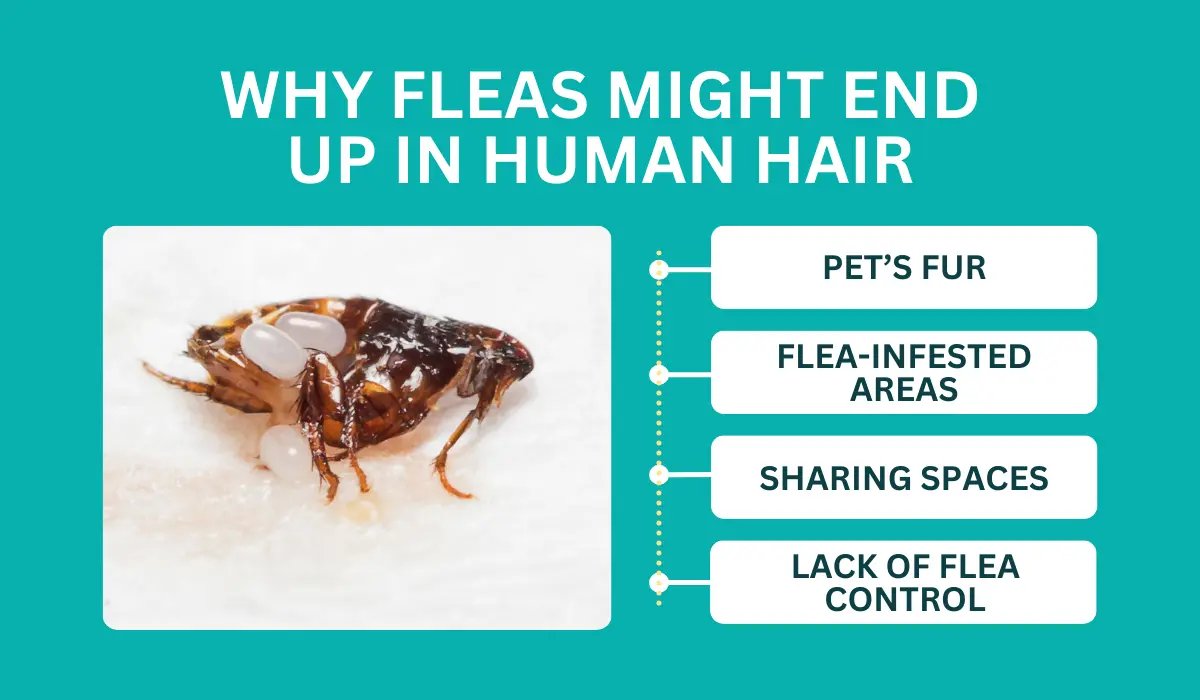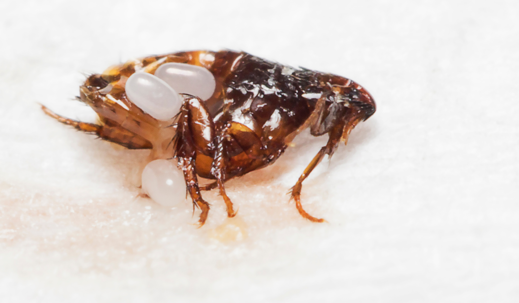Myth Busting: Can Fleas Live in Human Hair?
Fleas are a common nuisance, especially if you have pets at home. But what about humans? Can fleas live in human hair? Yes and no.
Typically, fleas won't make a permanent home in human hair. Instead, they might bite and hop back to a more preferred host.
Keep reading to discover the signs of flea bites and how to protect yourself and your furry friends from becoming a playground.
Key Takeaways
- Fleas rarely inhabit human hair, as they prefer the dense fur of pets for their lifecycle.
- Flea transfer to humans can occur from close contact with pets, highlighting the importance of regular pet grooming and environmental cleanliness.
- Managing fleas effectively involves treating pets and their living areas and possibly seeking professional pest control for persistent infestations.
Busted Myth: Fleas Don't Make Human Hair Their Home
Many people worry about fleas living in human hair, but this is largely a myth. Fleas prefer the fur of animals like cats and dogs, which provides a more hospitable environment.
Even though there are many different types of fleas (such as dog fleas, cat fleas, and rat fleas) the preference for human hair is very low.
However, you might have heard of an opportunistic feeder called human fleas. While you’re a suitable host, you aren't necessarily their first choice. They still target other warm-blooded animals.
Yet, vigilance is still essential. Fleas can feed on human blood to survive briefly if their animal hosts aren’t around.
Why Fleas Avoid Human Hair
While fleas bite humans and can cause allergic reactions and itchiness, they don’t lay eggs or live in human hair. Here’s why:
- The fur of animals like cats and dogs provides a dense, warm environment perfect for fleas.
- Flea larvae thrive in environments with debris and shadows provided by thick fur. Human hair lacks the density needed for flea larvae to develop.
- Flea eggs fall off easily in human hair. Dense fur allows eggs to stay securely until they hatch.
- While fleas can bite humans, they prefer the consistent availability of blood meals from their animal hosts.
- Fleas are vectors for tapeworm eggs. They can ingest and transmit tapeworm eggs from animals. Infesting humans does not benefit this life cycle.
Why Fleas Might End Up in Human Hair

When pets like cats or dogs have fleas, those fleas can transfer to human hair. This transfer often happens due to close contact. Pet beds, couches, and other upholstered furniture can harbor fleas, making it easier for them to find their way onto humans.
Other reasons why they might end up on you include:
- Pet’s Fur: Fleas lay eggs in a pet’s fur. When pets shed their fur, flea eggs can end up on human hair. Grooming pets regularly with a flea comb can help prevent this.
- Flea-Infested Areas: Fleas can also live in environments like crawl spaces or your yard. Walking through these areas can lead to fleas hitching a ride on human hair.
- Sharing Spaces: Fleas can jump onto human hair from infestations in pet beds or upholstery. You can pick up fleas from shared spaces even without directly touching pets.
- Lack of Flea Control: Without effective flea control and treatment, pets can continuously introduce fleas into the home, increasing the chance of fleas ending up in human hair.
What to Do If You Find Fleas on You or Your Pet
Finding signs of fleas on yourself or your pet can be concerning. Here’s what you must do to get rid of these critters and protect your home against serious issues like typhus.
Schedule a Pet Checkup
As pet owners, you should first schedule a vet appointment to assess the extent of the flea infestation. Vets can identify if an infested pet suffers from flea-borne diseases.
A vet might recommend flea products like specialized shampoos or oral medications. These treatments are designed to kill adult fleas and prevent pupae from maturing.
Alongside prescribed treatments, the vet might advise using a flea comb to manually remove fleas and flea dirt from the pet’s fur.
Treat Your Pet's Environment
Treating your pet’s environment is equally important to get rid of fleas. Here’s how to get rid of fleas in the home:
- Wash all pet bedding and soft toys in hot water to kill any flea eggs, larvae, or pupae.
- Regularly vacuum carpets, sofas, and other upholstered furniture to remove fleas and their eggs.
- Use insecticides specifically designed for indoor use to treat carpets and furniture.
- Ensure you follow the instructions carefully to protect pets and family members from hazards.
Consider Professional Flea Control
If you have severe flea problems, consider hiring a professional pest control service (like us at Native Pest Management). As pest control experts, we can offer tailored solutions to eradicate any species of fleas from your home and completely prevent future outbreaks.
We may use more potent insecticides that aren't readily available to consumers but are safe when applied correctly.
We can often provide ongoing prevention tips to keep your home flea-free. This may include regular inspections, strategic use of flea treatment products, and advice on maintaining a clean environment.
